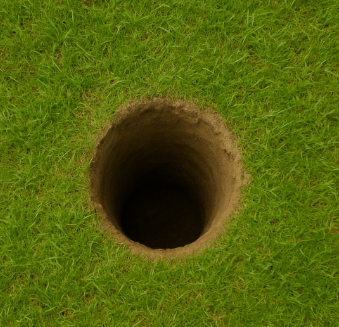Circular Gravel Calculator
Estimate how much gravel you need for circular areas and ring-shaped layouts.
Gravel Calculator for Circular Area – Patios, Firepits, Round Paths
Calculation is based on average density of 1600 kg/m³.
Calculation Results
Gravel Volume
0.00 m³
Gravel Weight
0.00 t

How Does This Calculator Work?
This calculator takes your post hole dimensions and gives you an accurate estimate of how much gravel you need. It works by calculating the volume of a cylinder, which is the shape of most post holes.
Formula used:
Volume = π × (radius)² × depth
You can also toggle the unit of measurement and optionally enter your own gravel density if you’re using a custom material.
Why Add Gravel to Post Holes?
Gravel serves a lot more than just filler at the bottom of a hole. It plays a crucial role in both supporting the structure and protecting it long-term.
- Structural stability – Gravel helps anchor the post and distribute load evenly.
- Drainage improvement – It prevents water from pooling at the base of your post.
- Prevents rot for wooden posts – By letting moisture drain away, it increases the lifespan of timber posts.
- Reduces frost heave – In colder climates, gravel reduces ground movement caused by freezing and thawing.
How Much Gravel Per Post Hole?
Most projects follow a basic rule of thumb: Add about 6 inches of gravel at the base of every post hole. For deeper or heavier posts (like for decks), you might want to use 8–12 inches instead.
A typical post hole is:
- 6 to 12 inches in diameter
- 2 to 3 feet deep
Let’s break down an example manually:
Suppose you're digging a 10-inch diameter hole and you want to add 6 inches (0.5 feet) of gravel:
- Convert diameter to radius:
10 ÷ 2 = 5 inches = 0.417 feet - Use the formula:
Volume = π × (0.417)² × 0.5 ≈ 0.27 cubic feet per hole
If you have 10 holes, that’s roughly 2.7 cubic feet of gravel total.
Post Hole Projects That Use Gravel
This calculator comes in handy for a variety of projects that rely on post holes, including:
- Fencing – both residential backyard fences and agricultural perimeter fencing
- Mailboxes – especially for community or heavy-duty mail stations
- Sign posts – road signs, business signage, or private property markers
- Pergolas and shade structures – posts need to be stable and moisture-protected
- Deck footings – often used in combination with concrete for stronger support
Gravel Types Suitable for Post Holes
Some commonly used gravel types in post holes include:
- Crushed stone – Sharp edges allow it to compact firmly; ideal for structural support.
- Pea gravel – Smooth and round; not the best for load-bearing but okay for drainage layers.
- ¾" minus gravel – Contains a mix of gravel and fine dust that compacts well; great for post holes.
- Class 5 or CA6 aggregate – Common in road base and post settings; ideal if you're using compactors.
For structural projects, avoid decorative gravel as it's not meant to hold weight or resist shifting.
Can You Skip Gravel and Use Concrete Only?
It’s not recommended. Gravel ensures proper drainage and helps prevent rot or frost damage, something concrete alone can’t do.
Should You Use Gravel for Wood or Metal Posts?
Yes, both benefit. Wood needs drainage, while metal needs stable footing to avoid tilt or sink.
Can I Reuse Gravel from an Old Hole?
If it’s clean and free of soil or organic matter, yes. But compacted or contaminated gravel is better replaced.
Recommended Tools and Supplies
Here’s what you’ll typically need when working with post hole gravel:
- Post hole digger or auger – For digging clean, round holes efficiently
- Gravel bags or bulk delivery – Depending on project size
- Tamper or compacting tool – To press the gravel down firmly
Optional:
- Post level – Helps ensure upright alignment
- Concrete mix – Often poured on top of gravel for added strength